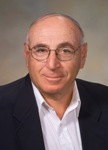Org. Synth. 2012, 89, 34-43
DOI: 10.15227/orgsyn.089.0034
DISCUSSION ADDENDUM for: 2-Trimethylsilylethanesulfonyl Chloride (SES-Cl)
Submitted by Joshua R. Sacher and Steven M. Weinreb*
1.
Discussion
Sulfonamides are among the most stable amine protecting groups that are able to tolerate a broad range of reaction conditions. This stability, however, can sometimes be problematic for protecting group removal, often requiring harsh conditions. The 2-(trimethylsilyl)ethanesulfonyl (SES) group provides a sulfonamide that combines the compatibility with many synthetic transformations with relatively benign removal conditions. The chemistry of reactions involving the SES group has previously been reviewed;
2 herein, we report some of the more recent examples of its use in methodology and total synthesis.
The SES group can be installed on a primary or secondary amine using 2-(trimethylsilyl)ethanesulfonyl chloride (SES-Cl) and a base, typically a tertiary amine or sodium hydride.
3 An alternate procedure using silver cyanide has been used to improve yields in difficult protections.
4 Generally, cesium fluoride in DMF or tetrabutylammonium fluoride (TBAF) in acetonitrile at elevated temperature is sufficient to remove the SES group,
3 producing TMS-F, ethylene, sulfur dioxide, and the free amine. Additionally, the SES group can be cleaved by HF,
5 tris(dimethylamino)sulfonium difluorotrimethylsilicate (TASF),
6 or refluxing 6 N HCl.
7 In certain special cases, judicious selection of the deprotection strategy can lead to different products, as demonstrated in the formation of either pyrrole
2 or pyrroline
3 from the corresponding SES-protected pyrroline
1 (Scheme 1).
8Scheme 1
In addition to its use in introducing a protecting group, SES-Cl can also effectively acidify an amine nitrogen and simultaneously provide a leaving group, as demonstrated in a synthesis of l-azetidine-2-carboxylic acid (
9), a naturally occurring non-proteogenic amino acid.
9 N-Sulfonylation of amino alcohol
4 with SES-Cl, followed by treatment of the resulting bis-SES compound
5 with base, gave the orthogonally-protected cyclic amino acid
6 (Scheme 2). The SES and
t-butyl ester protecting groups were removed selectively with TBAF or TFA, to yield amine
7 and acid
8, respectively, while global deprotection to form amino acid
9 was accomplished with HF.
Scheme 2
Although the traditional manner of SES group installation involves protection of an existing amine, it has become increasingly common to use related derivatives to introduce a SES-protected nitrogen into a molecule. One of the most common SES derivatives, 2-(trimethylsilyl)ethanesulfonamide (SES-NH
2), is easily prepared from the chloride by reaction with anhydrous ammonia
10 or ammonium hydroxide.
11SES-NH
2 has been shown to be effective in palladium-catalyzed sulfonamidations involving electron deficient aryl and heteroaryl halides (Scheme 3).
12 Both aryl bromides
10 and chlorides
11 give good to excellent yields of the corresponding aryl sulfonamides
12 and
13, and the reaction tolerates a wide range of functionality.
Scheme 3
SES-NH
2 has also been
N-alkylated in high yield with benzyl alcohol (
14) under ruthenium
13 and copper
14 catalysis to give benzyl sulfonamide
15 (Scheme 4). When benzylic acetate
16 was used in place of the alcohol, the sulfonamide alkylation to form
17 has been shown to take place rapidly at ambient temperature.
15Scheme 4
SES-Sulfonamides bearing a terminal alkene moiety can undergo a cyclization in the presence of a metal catalyst or oxidant (Scheme 5). For example, utilizing a chiral copper catalyst, Chemler and coworkers performed an enantioselective carboamination of
18, which they proposed occurs via a single-electron mechanism involving radical
19 to form hexahydro-1
H-benz[
f]indole
20.
16In contrast to the 5-
exo cyclization observed with metal catalysts, Michael and coworkers demonstrated that oxidative cyclization of
21 with hypervalent iodine gave solely the 6-
endo product
24.
17 A plausible rationalization for this transformation involves opening of an oxidatively-formed aziridinium intermediate
22 with trifluoroacetate resulting in the observed
endo selectivity. Hydrolysis of the trifluoroacetate
23 gave the SES-protected hydroxypiperidine
24. In this system, the SES protecting group gave slightly better yields than the corresponding tosyl, or 2- and 4-nosylsulfonamides.
Scheme 5
Iodosulfonamidation methodology using SES-NH
2 and a cationic iodine complex developed by Danishefsky
18 was recently adopted by Jurczak and Chaladaj in a formal synthesis of galantinic acid (
25) (Scheme 6).
19 Activation of the enol ether
26 with I(
sym-coll)
2PF
6, followed by opening of the iodonium intermediate by SES-NH
2, gave the iodosulfonamide
27 with good diastereoselectivity. Under basic aqueous conditions, sulfonamidoalcohol
29 was produced by hydrolysis of the SES-aziridine intermediate
28. Reductive opening of the pyran ring, protection of the resulting diol as the acetonide, and hydrogenolysis of the PMB group gave advanced intermediate
30 that could easily be converted to galantinic acid (
25).
Scheme 6
SES-sulfonamide has also been used in aziridination reactions, typically as the derived ([
N-SES]imino)phenyliodinane (SESN=IPh)
20 or in a one-pot procedure using SES-NH
2 and PhI=O.
21 Recently, a catalytic asymmetric modification of this aziridination was used by Trost and colleagues in a total synthesis of (-)-oseltamivir (
31) (Scheme 7).
22 The choice of sulfonamide and catalyst in the aziridine formation was a key in this concise synthesis. Of the sulfonamides examined, only SES-NH
2, coupled with a bulky rhodium catalyst, were found to give satisfactory results in the conversion of diene
32 to aziridine
33. Regioselective opening of
33 with 3-pentanol then gave the corresponding ether
34, which was acetylated and deprotected to give the free base of (-)-oseltamivir (
31).
Scheme 7
Recently, Komatsu and coworkers developed a high yielding, metal-free sulfonamide aziridination method using SES-NH
2 and
t-butyl hypoiodite to convert styrene (
35) into SES-aziridine
36 (Scheme 8).
23 In a screening of sulfonamides, SES-NH
2 was found to be superior to 2-nitrophenyl-,
n-butyl-, and
p-toluenesulfonamides. The authors note that the SES group is particularly useful in aziridine chemistry because it can be removed without intervention of undesirable side reactions.
Scheme 8
Due to the electron-withdrawing nature of the sulfonamide moiety, SES aziridines are useful substrates for ring opening reactions. For example, in a synthesis of (+)-preussin (
37), SES-aziridine
39 was opened by the lithium anion of allyl sulfone
38 to give SES-sulfonamide
40.
24 Isomerization of the alkene to intermediate
41 by treatment with TBAF at elevated temperature promoted a stereoselective 5-
endo-trig cyclization that took place with concomitant SES removal. The resulting pyrrolidine
42 was then converted to the natural product
37 in 3 steps.
Scheme 9
2-(Trimethylsilyl)ethanesulfonyl azide (SES-N
3), which is easily prepared by reaction of SES-Cl with NaN
3 in acetone,
25a has also been used in metal-catalyzed aziridination reactions. For instance, Katsuki and coworkers used SES-N
3 to effect an asymmetric transformation of alkenes
43 to aziridines
44 using a chiral ruthenium-salen catalyst (Scheme 10).
25 Interestingly, SES-N
3 showed higher enantioselectivity than the corresponding 2- or 4-nosylazides, while maintaining a similar yield.
Scheme 10
SES-N
3 has also been shown to participate in alkyne-azide 1,3-dipolar cycloaddition reactions (Scheme 11). Thus, in the presence of a catalytic amount of CuI and 2,6-lutidine, the reaction of the azide with phenylacetylene (
45) proceeds smoothly to give the 4-phenyl 1,2,3-triazole
46.
26 By changing the base to triethylamine and adding an alcohol to the reaction mixture, the corresponding
N-protected imidate
48 can be isolated.
27 If water is used, the acylated sulfonamide
49 is obtained in high yield.
28 The reactions involving alcohol and water most likely proceed through addition to a transient ketenimine intermediate
47.
Scheme 11
N-Acyl-SES-sulfonimides can also be obtained from carboxylic acids and SES-N
3 via a one-pot, three-step sequence (Scheme 12).
29 For example, activation of acids
50 with
t-butyl chloroformate, followed by treatment with lithio trimethylsilyl thiolate, and methanolysis of the resulting silylated compound gives the thioacid, which is immediately combined with SES-N
3 to give the
N-acylated sulfonimides
51. These sulfonimides can be
N-alkylated and the SES group can be selectively removed under mild conditions.
Scheme 12
Appendix
Chemical Abstracts Nomenclature (Collective Index Number);
(Registry Number)
2-Trimethylsilylethanesulfonyl chloride (106018-85-3)
 |
Steven M. Weinreb was born in Brooklyn, and grew up in Rochester, NY. He did his undergraduate work at Cornell University, and received a doctorate from the University of Rochester with Marshall Gates in 1967. He then held NIH Postdoctoral Fellowships at Columbia University during 1966-67 with Gilbert Stork and at MIT during 1967-70 with George Büchi. He began his independent scientific career at Fordham University in New York City as an Assistant Professor of Chemistry in 1970. In 1978, he joined the faculty at Penn State and was named Russell and Mildred Marker Professor of Natural Products Chemistry in 1987. Throughout his career he has been involved in research on the total synthesis of natural products, heterocyclic chemistry and the development of new synthetic methods
|
 |
Joshua Sacher was born in Wilmington, Delaware in 1984. He obtained his B.S. degree in biochemistry from the University of Delaware in 2005. While at Delaware, he did undergraduate research with Douglass Taber and had an internship at Cephalon, Inc. He then joined the Weinreb group at Penn State University, where he is currently pursuing his Ph.D degree.
|
Copyright © 1921-, Organic Syntheses, Inc. All Rights Reserved